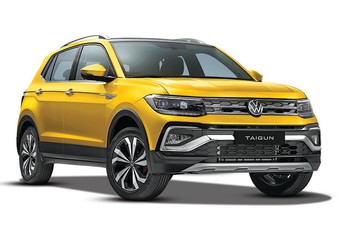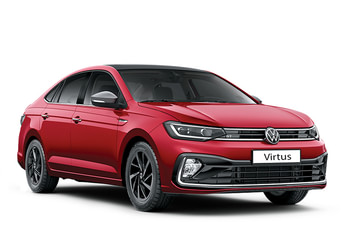Auf Wiedersehen! Bidding farewell to the VW Polo
Twelve years separated the first and last Polos in India, and we chart the journey of the car that laid the foundation for Volkswagen in the country.
Published On May 24, 2022 04:12:00 PM
32,094 Views
Follow us onJanuary 5, 2010 was a landmark day. German automaker Volkswagen was showcasing for the first time its maiden mass-market product, the Mk5 Polo, to Indian consumers at the Delhi Auto Expo. Though they entered a few years earlier, this was the car that would effectively launch the brand in India and VW was taking no chances in getting this launch right. There were no half measures, no penny pinching for this all-important launch, and following the massive smoke, lights and action-packed unveil at Pragati Maidan, VW India kept the momentum going with an unprecedented advertising and marketing blitzkrieg that peaked with the launch of the Polo on March 8, 2010 for Rs 4.34 lakh.
The message was clear: VW was big, had cash to burn, and meant business. This was the company to join and anyone worth their CV was applying there for a job. But what about the Polo itself?
 We ceremoniously drove to the Polo’s place of birth to hand back our long-termer, and it will be missed.
We ceremoniously drove to the Polo’s place of birth to hand back our long-termer, and it will be missed.
Volkswagen Polo: Small car, big plans
The Polo came to India within a year of its international launch and represented German quality at its best. Its tough build, beefy suspension and driving dynamics helped it stand apart from the competition at the time, but it was let down by a pair of weak engines. The pair of 75hp, 1.2-litre engines – a naturally aspirated petrol and a turbo-diesel – were a clear mismatch with the brilliant chassis, and the cramped rear seat was an enduring weakness that remained until the end.
_AN_SC.jpg?w=700&c=0) After a successful full first year of production, Polo sales slipped into a steady decline.
After a successful full first year of production, Polo sales slipped into a steady decline.
These weaknesses however didn’t stop customers from buying the Polo, which set a new benchmark for quality and durability. The hatchback got off to a flying start, propelled to a large extent by the staggering amount of marketing money behind it. In 2011, its first full year of production, VW sold 38,634 units, a great debut by any reckoning. Ironically, this was the Polo’s best year ever, and after 2013, sales started dropping, as the reality of the Polo’s high cost of ownership and poor resale value started biting. Intense competition from bigger, better-equipped, and more modern premium hatches from Honda, Hyundai, and Maruti Suzuki also made life for the Polo harder. However, neither the Japanese nor the Koreans could match the German hatch for its sheer build quality and dynamics, and it’s these attributes that earned the Polo a steady fan following for the rest of its years.
Volkswagen Polo: Several changes of heart
Soon after the launch, VW India realised the Polo needed the right set of engines to match its dynamically brilliant chassis, and, in September 2010, it launched a bigger, 105hp, 1.6-litre engine, which certainly made it a ‘warmer’ hatch. But it was the fabulous 105hp, 1.2 TSI engine mated to the DQ200 7-speed twin-clutch auto transmission that accorded the Polo the status of hot hatch.
This astonishing engine, with its punchy mid range and broad torque spread, transformed the Polo into the most fun-to-drive hatch by far. The 1.2 TSI engine also showcased VW’s mastery of direct fuel injection, turbocharged petrol technology, which remains the gold standard in the industry to this day. TSI became a moniker for power, performance and refinement, and the Polo GT TSI found more buyers than anticipated, despite its high price.
In 2014, the Polo received a minor facelift, but the big upgrade was the introduction of the 90hp, 1.5 TDI engine, which came as a blessing for diesel lovers that were unimpressed by the unrefined and underpowered three-cylinder 1.2 TDI it replaced. More importantly, the 1.5 TDI was a potent weapon in the Polo’s arsenal to stave off other premium diesel hatchbacks that were gaining ground at a time when demand for diesel was at its peak. But, however good the punchy and frugal 1.5 TDI was, it couldn’t stem the gradual slide in the Polo’s sales.
The Polo was beginning to show its age, and this was made acutely apparent in 2017, when the Mk6 Polo, based on the company’s future-ready MQB platform, was launched internationally – this effectively put the Indian Polo a generation behind. Besides, consumer preferences were shifting to what was inside the car rather than what was under the bonnet. The electric and electronic (E/E) architecture of the old PQ25 platform, on which the Polo was based, was its biggest limiting factor. It simply didn’t have the E/E firepower to offer the plethora of infotainment and connected features its rivals could. It is for this reason that the Polo soldiered on with old-fashioned analogue dials right until the end, and the touchscreen, which finally arrived in 2017, looked more like an aftermarket fitment than one integrated with the car.
 The 1.0 TSI was the last engine introduced to the Polo in India.
The 1.0 TSI was the last engine introduced to the Polo in India.
The arrival of BS6 emission norms in April 2020 saw the biggest transformation to the Polo’s engine line-up – some of it good, some of it not so good. VW, still guilt-ridden after the ‘Dieselgate’ scandal in 2015, knocked off diesels from its entire line-up, the Polo’s included. The company didn’t want to be seen as a diesel car company and, hence, didn’t want to invest in upgrading diesels to the new emission norms. It, instead, focused on its core TSI technology. What the 2020 Polo got in addition to the base 76hp, 1.0 MPI engine was the latest EA211 1.0 TSI, a compact, three-cylinder firecracker that developed a zesty 110hp, loved to be revved, and had a zingy exhaust note.
The 1.0 TSI also saw the debut of the 6-speed Aisin-sourced torque converter, which replaced the DQ200 7-speed twin-clutch unit in the previous 1.2 TSI. Fears that the torque converter would penalise performance proved unfounded, after our tests showed that the new automatic was actually quicker than the discontinued twin-clutch variant. But it was the 6-speed manual that got the most out of the 1.0 TSI, thus earning the Polo true hot-hatch credentials. It was a fitting way to bow out after 12 long years.
Volkswagen Polo: The final stretch
What finally put paid to the Polo, though, was the cost of making it. It was too expensive for VW, which made an estimated 1,000-euro loss on every car sold. Built for European markets and consumers, the Polo carried inherent costs to meet international standards of safety and longevity, but sadly it’s not something consumers were willing to pay for.
But its ‘Europeanness’ always endeared it to its owners. Which is why it was not surprising that, in February this year, after Autocar India broke the story about the Polo’s imminent end, there was a rush to buy the last remaining stocks.
The Polo’s tough build, timeless design, and just the way it drove, set it apart from the crowd. It was for people who loved cars, and that is how the Polo will be remembered.
HORMAZD SORABJEE
Volkswagen Polo Cup: Race on Sunday, sell on Monday
Volkswagen couldn’t just drop a press release about the Polo’s departure and be done with it. Not with the love it stirred in its fans’ hearts. It needed a proper send off, and what better way to bid farewell than celebrate its motorsport pedigree at a racetrack. If Chakan is where the Polo was born, the MMRT (Madras Motor Race Track) has been its playground for these 12 years; a playground that has seen the rise of the Polo Cup.
 Polo Cup race series proved VW's engineering prowess to buyers of the road car.
Polo Cup race series proved VW's engineering prowess to buyers of the road car.
The Polo Cup cars aren’t simply standard cars with a bit of a tune-up and some nice-looking race stickers. They are proper race cars with slick tyres, completely stripped out interiors, a racing roll cage, fire extinguishing system, stiffened suspension; and in the last cup season, the engine was tuned to make excess of 200hp and mated to a sequential gearbox.
 Polo Cup might have come to an end, but VW Motorsport will live on.
Polo Cup might have come to an end, but VW Motorsport will live on.
Inside, there’s nothing more than a single stiff race seat with five-point seat belts, a compact MOMO steering wheel, a tiny screen replacing the dials that reads out your temperatures and pressures, and absolutely no sound deadening. As a result, from the moment the engine rumbles into life, the race car completely sounds the part and then the blisteringly quick acceleration, spine-jolting shifts and powerful braking, all show reactions of a car bred to race. It drove in a manner belying its age and it mustered out some incredible laps, bouncing over the kerbs and tearing down the straights.
 VW RX ‘Winter Project’ is a 205hp, mid-engined, RWD monster.
VW RX ‘Winter Project’ is a 205hp, mid-engined, RWD monster.
Under Sirish Vissa (head, VW Motorsport), the Polo Cup, which started back in 2010, grew to great heights. It started off with the Polo TDI, moving on to Polo TSI, then the Vento Cup, followed by the Ameo Cup, before finally coming back to the Polo in 2020. Vissa was also the motive force behind some incredibly cool projects like the mid-engined, rear-wheel-drive Polo RX. Still, his baby was the Polo Cup and while he stood in the pits watching proudly as each Cup car rumbled across the start/finish straight, you could sense the emotion beneath his famous ear-to-ear smile. There won’t be a Polo Cup anymore, but thanks to many enthusiasts all over the country, his creations and their legacy, just like the Polo, will continue to live on.
JAY PATIL
Also read:
Volkswagen Virtus review: New Honda City rival is a Jetta reborn
Copyright (c) Autocar India. All rights reserved.















Comments
Member Login
Personal Details
No comments yet. Be the first to comment.